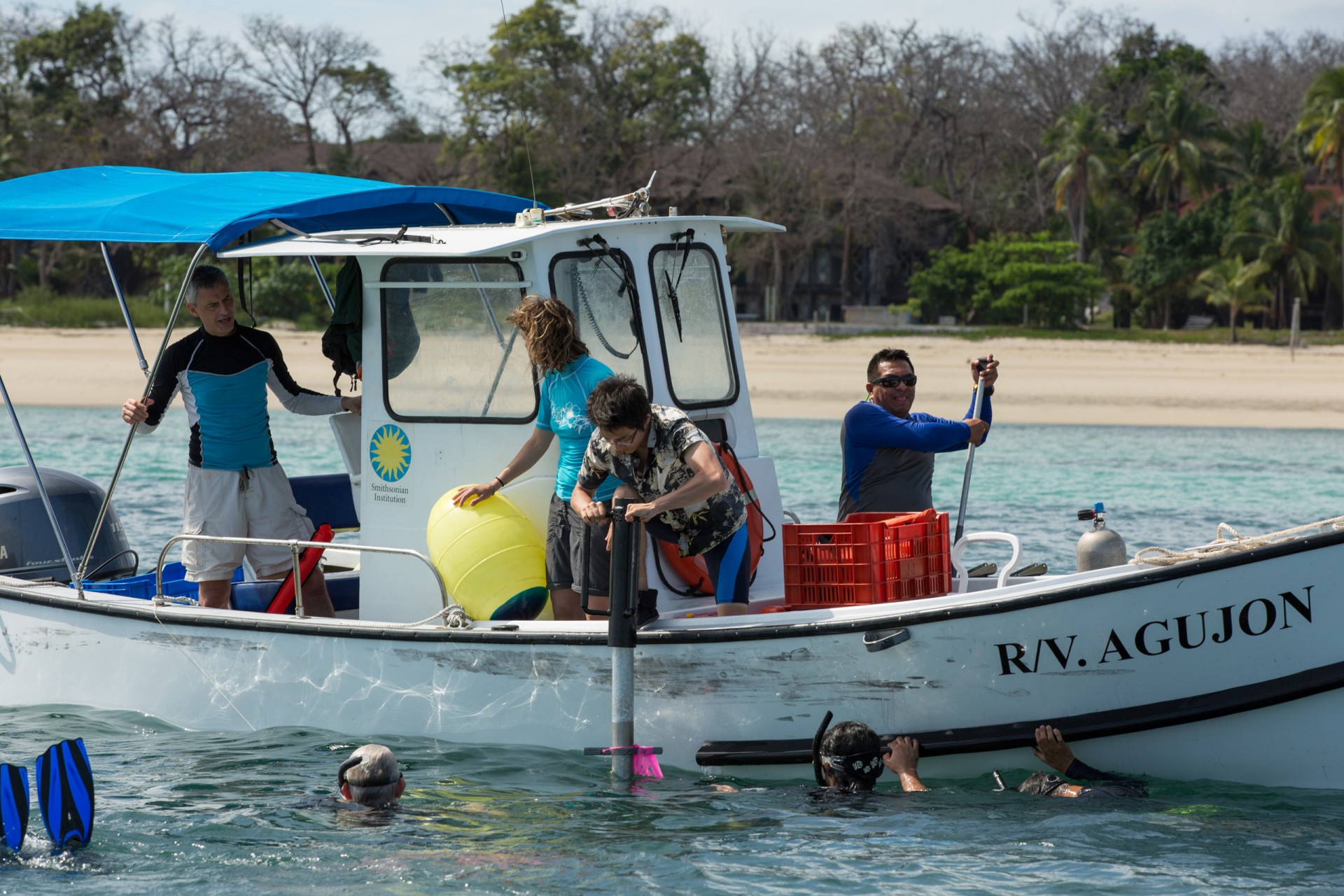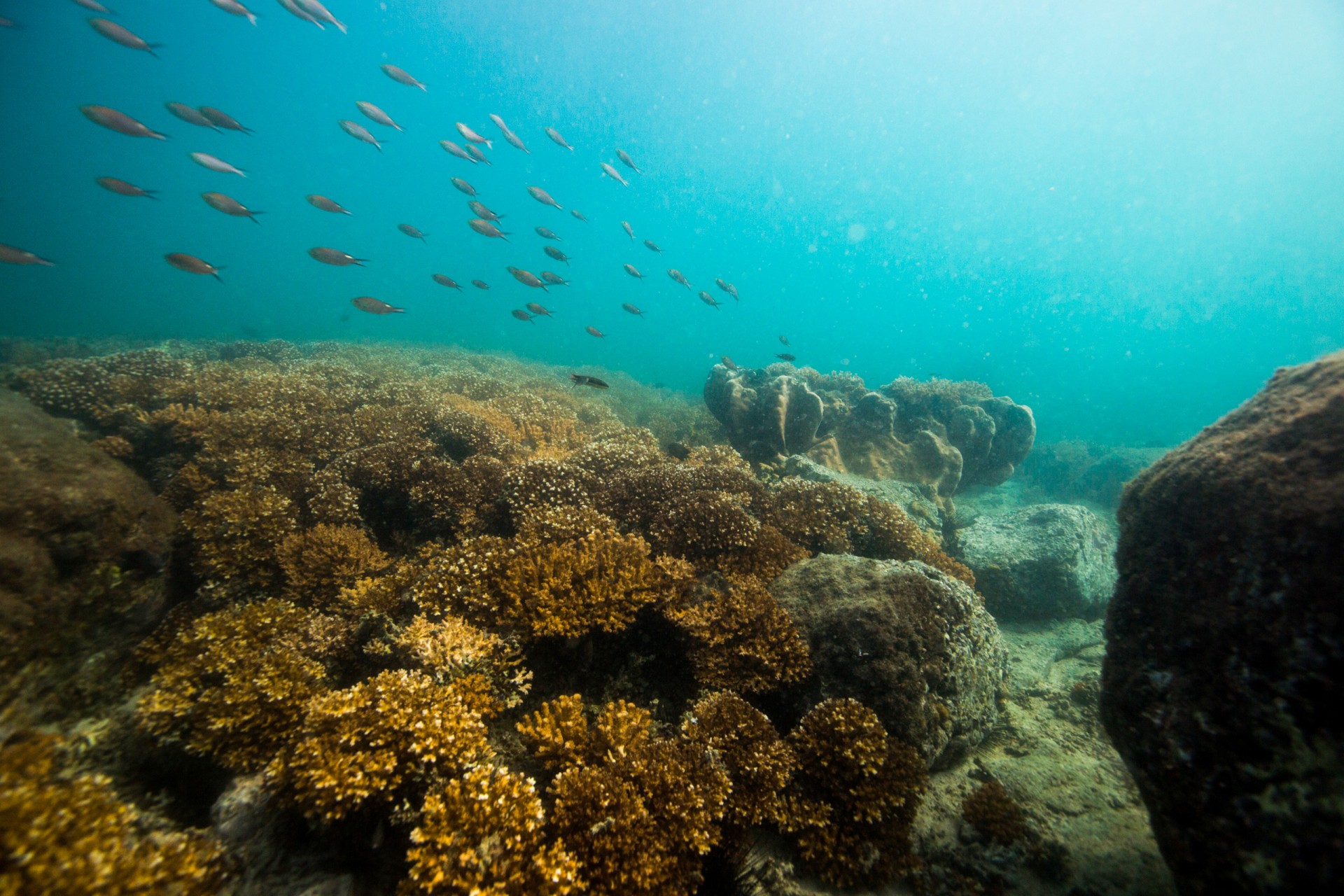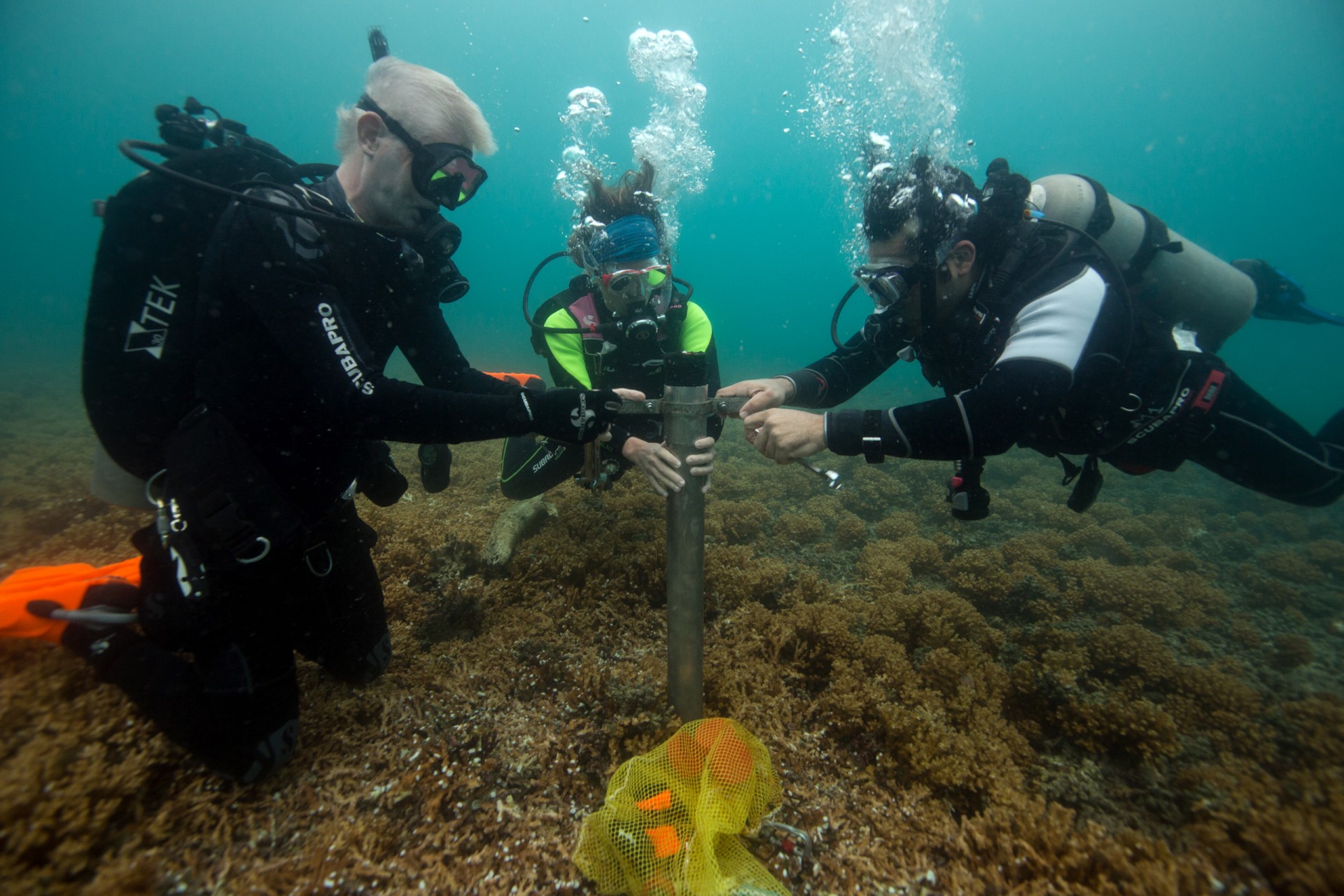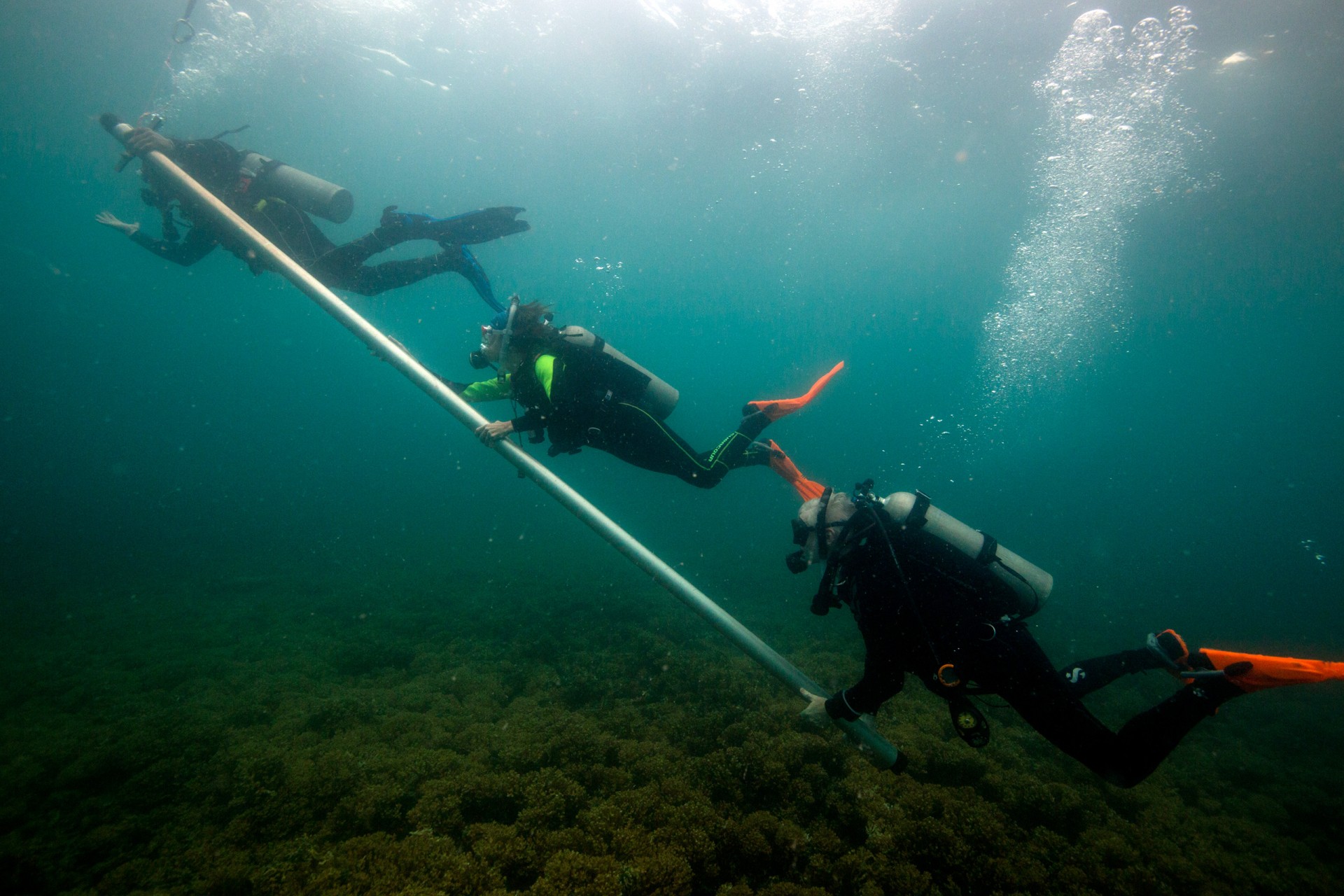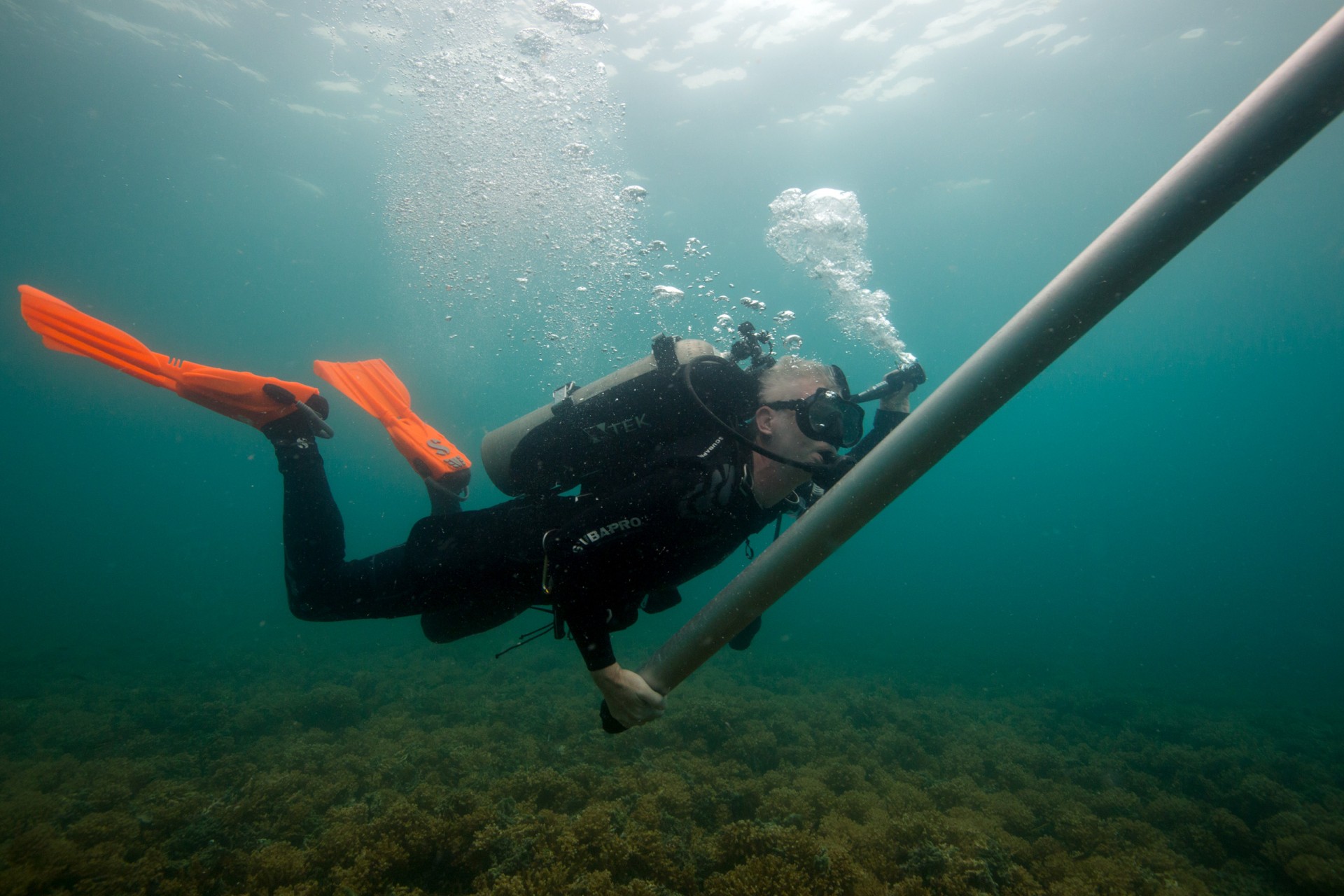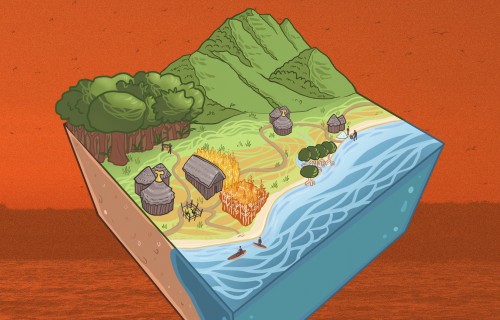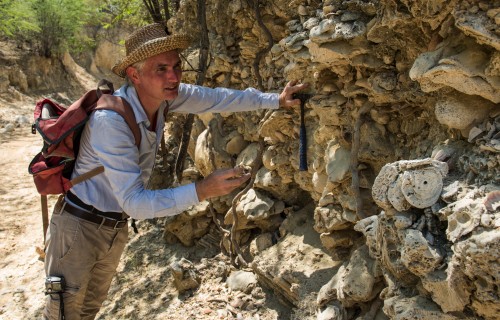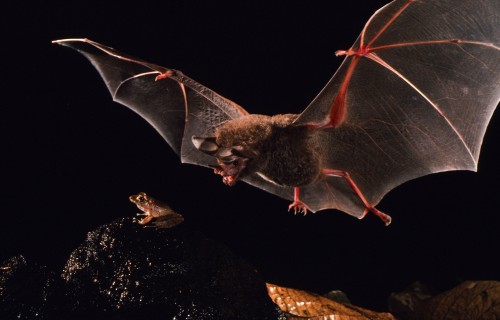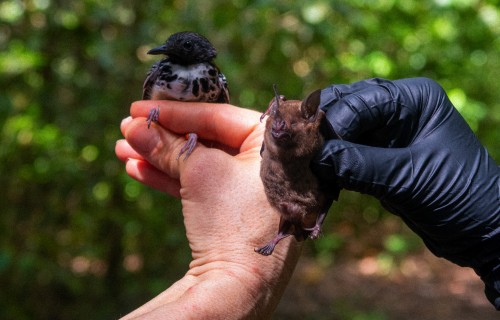Pseudoscorpions: Little guardians of crevices (public talk in Spanish)
Redefining
Pristine
Modern marine oxygen-deficiency research
inspires search for fossil record
Bocas Del Toro, Panama
Photos by Sean Mattson
Smithsonian scientists who documented massive mortality of corals and reef organisms meticulously studied one of the apparent causes: oxygen deficiency. A Smithsonian paleobiologist asks if the recent fossil record shows signs of similar hypoxia events.
When Smithsonian alum Andrew Altieri published a groundbreaking study on how low oxygen, or hypoxia, decimates coral reefs, his colleague Aaron O’Dea got to thinking: Is there fossil evidence for hypoxia events?
Oxygen depleted “dead zones” can kill anything that can’t swim away, including corals and other tropical reef organisms. Warming and pollution are contributing factors.
“Are these hypoxic events novel or did they exist naturally in the past?” says O’Dea, whose team this March took cores at the same Caribbean lagoons where Altieri and colleagues did their research. In the lab, they will examine the samples for diagnostic signs of hypoxia by looking at the abundances of hypoxic-tolerant and intolerant animal fossils and by measuring oxygen and carbon isotopes in fossilized shells over the last 2,000 years.
“It’s an exploratory test but the question is fascinating,” says O’Dea.
Cores galore and more
O’Dea’s lab is on a global core-taking spree, which began in French Polynesia last year and continued in Panama’s Las Perlas Archipelago this January. The lab is plotting expeditions for the coming months in Panama’s Coiba National Park and on reefs in the Western Pacific.
Two lab interns, in partnership with Panama’s science ministry, SENACYT, will continue their research projects. Abhy Verdurmen, who is studying at the University of Panama, asks if two species of sea bass (or corvina) are growing more quickly in response to hundreds of years of fishing pressure.
Ramiro Solis, of UMIP, is compiling a unique collection of microgastropods from both sides of the Isthmus of Panama, which will be an important tool for studying environmental changes in the fossil record through time.
“We would really like to estimate the variation that existed on coral reefs in the past,” O’Dea says. “Without describing the breadth of variation, we run the risk of assuming that pristine was just one single state — a reef filled with sharks and healthy coral all across the world. Clearly, that cannot have been the case. The only way to quantify the gamut of variation in the past is through the fossil record. All these projects are designed to get us to think more critically about the effects of natural and human-caused changes on marine ecosystems.”

